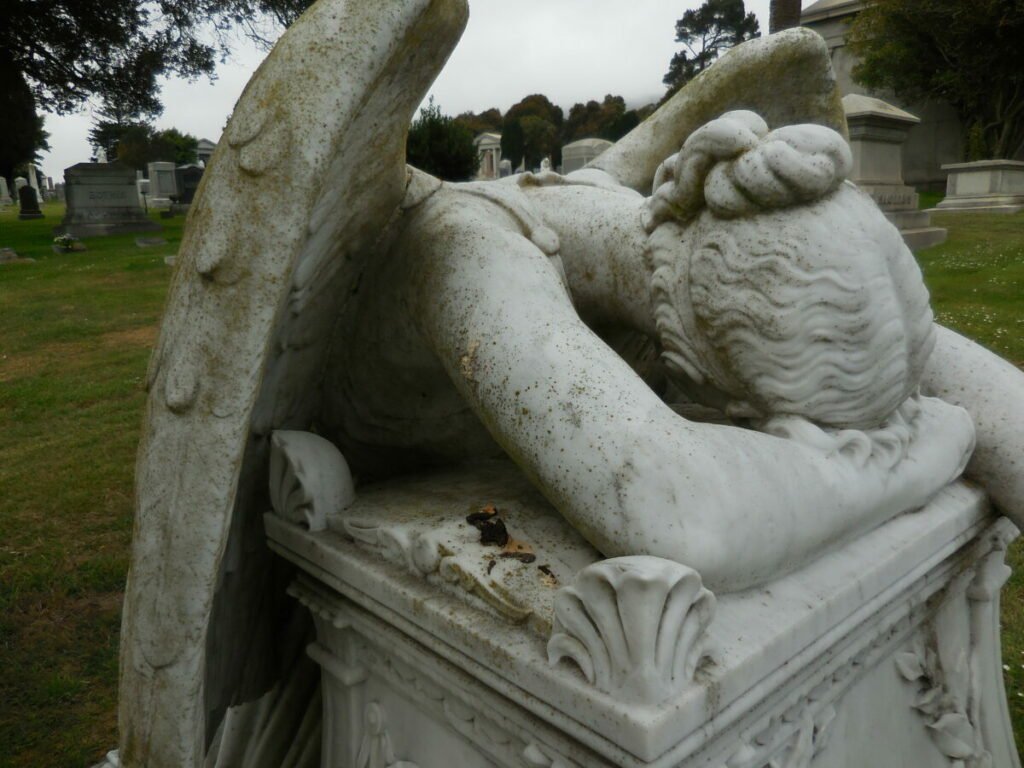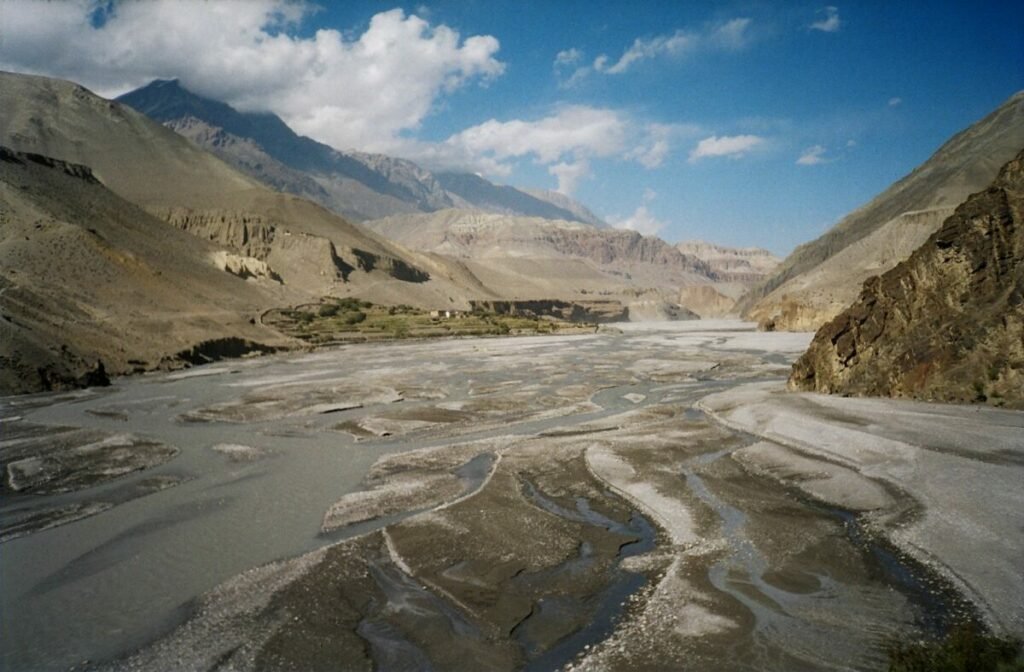I have a fear of heights. It is a fear of depths, too. Stand on the edge of the Grand Canyon and look down? No, no matter how beautiful it may be. Sit with my legs dangling off a mountain peak? Never. I can’t even look at pictures of people doing these things without flinching.
For years, I refused to look over the precipice’s edge into the world of the dying. I ran from them. I turned off the phone, been out of town. I left the room. I have said, “I’m praying for you,” and then didn’t. You would think death was a mighty wave about to engulf me, the way I tried to outrun even a whisper of it.

One time I avoided Bill, a friend who was my first love. He had AIDS before the triple cocktail came along. He lived about two years. The last few months he walked with a cane and was blind, he the aesthete, the dancer, the deep appreciator of human forms, first mine and then the bodies of many men at just the wrong time in history, though the timing seemed perfect as he found his way home in those precious frames.
Years before, when we were in high school, Bill and I shared a love for the French language, for classical music, for art, for nature, and for each other. We went to church together. We walked for hours in the huge park across the street from my house, a park that led to the Potomac River’s shoreline. We lay in the grass above the riverbank on autumn afternoons, celebrating our existence and the unlikely joy of two misfit kids falling in love.
We went to different colleges. While we stayed connected for the first couple of years, our relationship couldn’t withstand the distance and we split up. After college, Bill came out to me. It was confusing news, as we had enjoyed each other greatly physically. He explained, “It’s not about the body parts. It’s about the emotional connection with men.” “Okay,” I said. “Well, you have my support just as you always have had.”
Sadly, Bill became fully ready to claim his gayness right before AIDS hit the community. Like many others, he was enjoying the freedom of a city scene, connecting with many men, dancing away fast from what was left of our religious upbringing. He couldn’t guess who infected him. He didn’t want to. He was grateful for all the men and for the freedom of his experience with them.
When Bill was diagnosed, he asked us—me and my husband, Guy—to be part of his support network, and we said yes. Once he was in the hospital in spring, and he asked if I could bring lilacs. Florists didn’t carry them, and I didn’t have time (I said) to drive ten miles to my mother’s house where they bloomed in abundance. I bought something else, I can’t remember what, and took it to the hospital. His face fell.
There is no replacement flower for lilacs from my mother’s yard.
In those days, his last seasons for lilacs, for garden roses, for home-grown lilies, for cascades of fall leaves, I always brought the wrong gift. Said the wrong thing. Left too soon.
Guy, on the other hand, took him to the doctors, took him to the movies, cleaned his apartment, took him shopping. These two men I loved both sang bass in choruses, played the cello, excelled in French and Russian, adored Bach and Egon Schiele. Both tall and thin, both gentle and careful, both non-standard American males who hated football and always gave panhandlers more money than they asked for.
My mother died while Bill was sick, and I inherited some money, not a fortune, but more than I’d ever had before. Bill was broke and in debt. I gave him $10,000 because my mother had loved him and he needed it. It was not a loan and we both knew it. He would not have time to repay it. After I gave him the money, when I felt guilty about not seeing him more, I’d think, “But I gave him that money,” as if my duty was discharged when I knew it was not.
Theoretically, I could have given him more time, more love. In fact, I could not.
A month or so before he died, Bill left a message on our answering machine. He said something like, “Things are not going so well right now, and I just wanted to call and thank you both for all you’ve done for me.” Meaning: before I die. I rolled my eyes as if he were being melodramatic. I could not tolerate it, him, sickness, vulnerability, love, death. Over the previous ten years, I had lost my father, brother-in-law, sister, mother, and a baby I was carrying early in the pregnancy. I was sick to death of death. I told Guy about the call and about my reaction. Guy called him back. Guy had the conversation I could not tolerate. Guy saw him again and made excuses for me.
When I let myself think about Bill in those days, I vowed I would see him soon, then took on ridiculous writing deadlines so I couldn’t. Or I’d remind myself I hadn’t yet cleaned out my mother’s house so it could be sold. And then I didn’t do that either.
I was a surfer atop the world’s highest wave, trying to balance on a sliver of a board so I could hold my pose one more millisecond, just time enough for one more glint of sunlight before the collapse.
On the day he died, I had a huge writing project due. Bill’s sister Linda, “the self-righteous religious prig,” as I liked to think of her, left messages asking me to call right away. He had wanted to see me. I kept on writing. It was a project for the Holocaust Museum. I wrote a lot in those days about cruelty and death. I was very good at it. I could cry over the children of Theresienstadt and I could make readers cry, too.
I forced myself to call Linda back a couple of hours after she’d last called.
“Oh Connie,” she said as if in awe, “he just died.”
Perfect timing.
“Oh Connie, he’s so beautiful,” said the sister who had long prayed for him to overcome his homosexual ways. “He looks like a Goya, so long and thin.”
Damn her, I thought. How could he be dead and beautiful?
Linda said she would call me with the funeral information. I left the office. I went home and slept for many hours in the middle of the day. I woke up in the dusk with western light casting a watery shadow on my bedroom wall.
Months later, I received a letter from an attorney saying Bill had left me a piece of art. It was a huge, three-and-a-half feet square framed print. The impoverished Bill had somehow collected a particular artist’s works. I had seen them, handsomely framed, in Bill’s apartment and wondered if my $10,000 had gone toward this collection.
In the print Bill left to us, the artist used large, simply-formed shapes to create a dark blue river flowing past green banks, between looming, darker blue mountain peaks. There is something of a feminine shape to the forms, hinting at thighs and a vulva. It’s a gully, a chasm, a free space between towers of earth. If I stood on the mountains’ sides, I would fall. If I sat on the river’s banks, I would likely be drowned by unpredictable floods. It is not our favorite piece of art, but its mammoth size has landed it above fireplace mantles in three different houses since Bill died. At first, it’s hard to look away from.
Recently I learned what the print depicts. On the back of it, there’s a title: Kali Gandaki. Only recently did I look up the meaning of the title. The Gandaki river (kali) runs through a gorge in Nepal between two 26,000-foot mountains. For centuries, ammonite fossils found there—round stones with circular or spiral markings—have been treasured as having healing powers. The river, a tributary of the Ganges, is sacred in both the Hindu and Buddhist traditions.
You can make the journey to the bottom of the gorge, but one guidebook warns it is both “dangerous and fun.” It can’t be done without a local guide.
Bill must have known the most dramatic fact about the Gandaki gorge when he assigned it to us in his will, just as he would have known the extent of the pain I tried to avoid when I ran from him as he died: It is the deepest river gorge in the world.
Today, I run toward the dying. It is part of my work as an Episcopal priest. It turns out I am really good at accompanying people as they navigate this rough terrain. I have sung old hymns at their bedsides, held hands, marked the cross in oil on the foreheads, prayed for healing and release. I have prayed and heard in the quiet place some call intuition that the dying person needed to talk about a particular thing, or be forgiven for it, before they could die, and told comatose people that God puts our sins farther away from us than the east is from the west, and heard a few hours later that they had finally gone. I have fought back my own sorrow in order to be a healing presence, then gone home and slept for twelve hours or just sat in my yard and stared at trees. I have helped people with their first encounters with the dead bodies of their loved ones. I have been the first to cast earth on coffins or into graves as a community completed the rite of Burial of the Dead.
I am still afraid of heights and depths. I am still not the girl who is going to train to climb any mountain, much less a Himalayan one, physically or figuratively. But sometimes I believe the blessing waters of the Gandaki have reached me without me having to climb anywhere. Sometimes I believe I have been called and carried into the deepest gorge in the world—and, without a clue as to how this happens, carried back out again.


Share this post with your friends.
